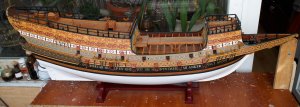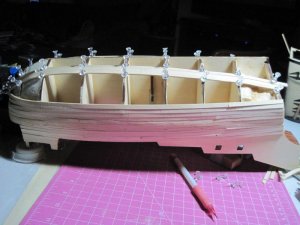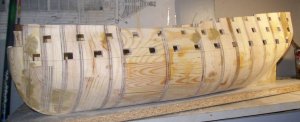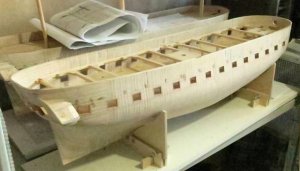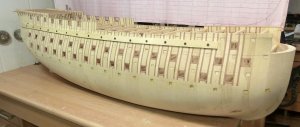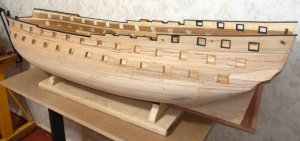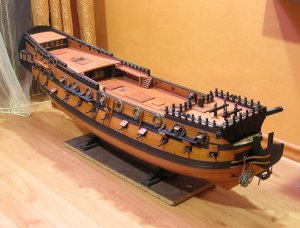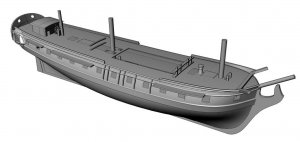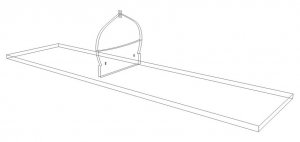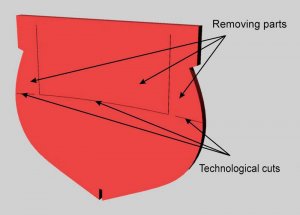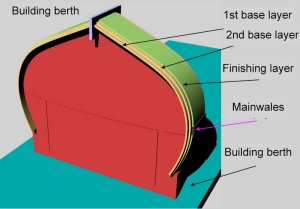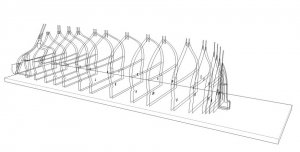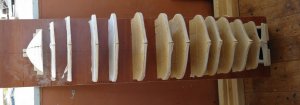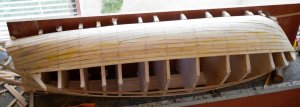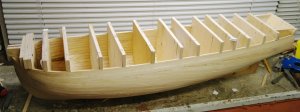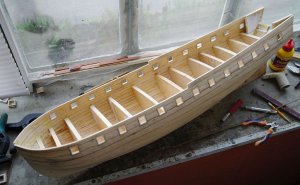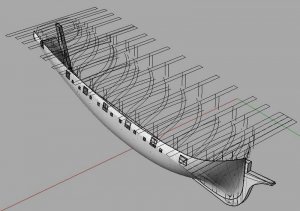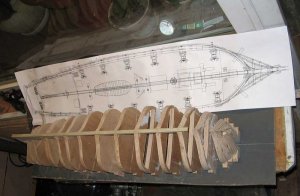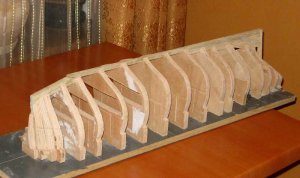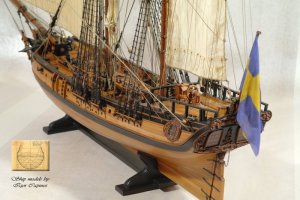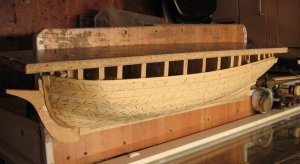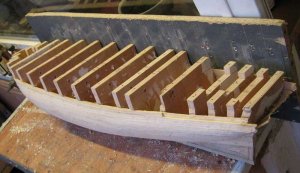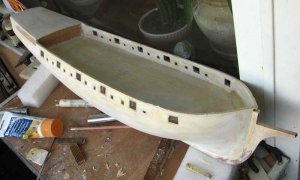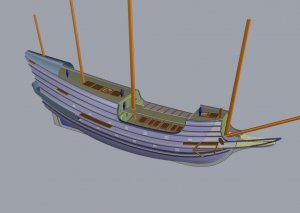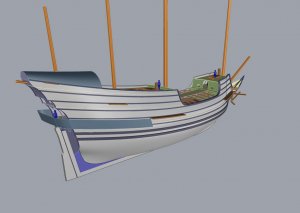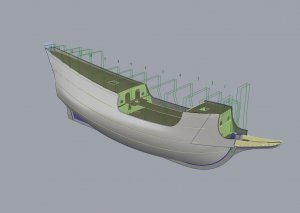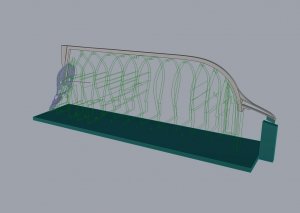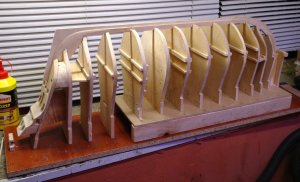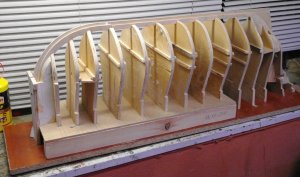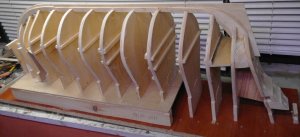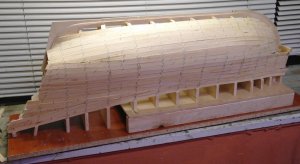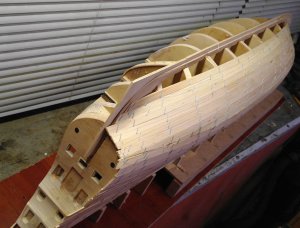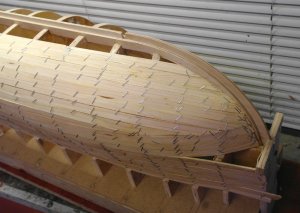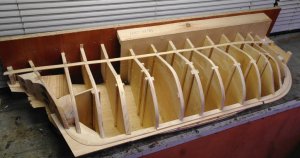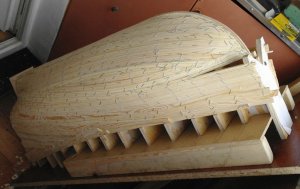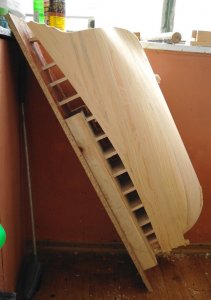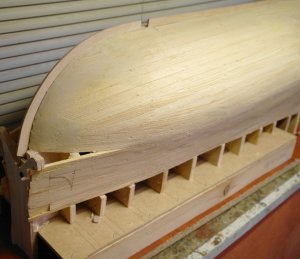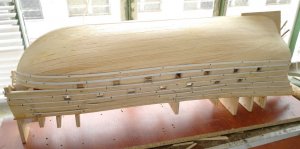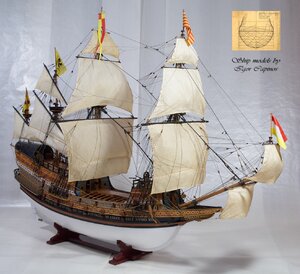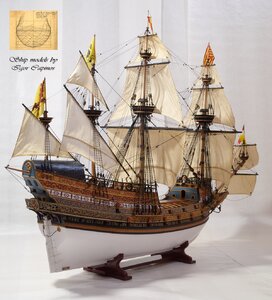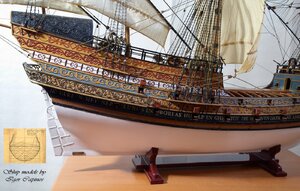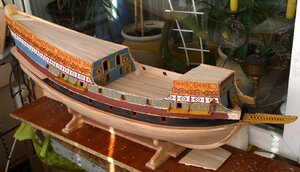Courtesy of - Igor Capinos, Poltava , Ukraine
This presentation discusses a simple, affordable and inexpensive way to build quality basic (roughing) hulls for static ship models.
1. All set forth in this presentation are those of the author and do not claim absolute truth.
2. You can apply all the techniques described herein and methods at your own risk. The author assumes no responsibility for use
3. All the materials for this presentation are taken from public sources, mainly from the Internet.
Wood monolith ( of a single piece of wood ).
Plywood frames with filling. The method which has become popular in recent years. The essence of the method is that between frames plywood glued wooden wedges, which are then ground off to obtain the desired shape of the hull.
"Shell." Professional is rarely used by the method described A.Baranov. The essence of the method in a multilayer planking of wooden slats on the wooden boob ( kind of "papier mache" from wood ). For fast fixing brackets used Stapling Gun
This presentation discusses a simple, affordable and inexpensive way to build quality basic (roughing) hulls for static ship models.
1. All set forth in this presentation are those of the author and do not claim absolute truth.
2. You can apply all the techniques described herein and methods at your own risk. The author assumes no responsibility for use
3. All the materials for this presentation are taken from public sources, mainly from the Internet.
1. On the stability of the ship model's hull.
Stability of ship models hull is the most important criterion of quality. Often modellers sees in winter the hull which was planking in summer appear sufficiently large slit between the planks. The gap may disappear next summer or maybe even greater. Because of this modeller has to go to extreme measures - to remove the trim, strengthen the body and sheathe again. To prevent such a phenomenon should modeller at the design stage hull design to provide long-term stability.
2 Analysis of today's most popular methods of building ship model hulls
Wood monolith ( of a single piece of wood ).Stability of ship models hull is the most important criterion of quality. Often modellers sees in winter the hull which was planking in summer appear sufficiently large slit between the planks. The gap may disappear next summer or maybe even greater. Because of this modeller has to go to extreme measures - to remove the trim, strengthen the body and sheathe again. To prevent such a phenomenon should modeller at the design stage hull design to provide long-term stability.
2 Analysis of today's most popular methods of building ship model hulls
Wood monolith ( of a single piece of wood ).
- Advantages - the easiest and most intuitive way.
- Disadvantages - difficult to achieve, is only suitable for small hulls, they have a greater tendency to deformation and cracking.
- Advantages - the simplicity of production set, this is usually laser cut of plywood
- Disadvantages - Planking process is very difficult. Typically, manufacturers offer hold planks with nails or thumbtacks hammered into the end of the plywood the frame. Carnations in an end face plywood keep bad, frames can be split, planking turns sloppy. On single layer, hulls are often seen sharp bends ("ribs").
Plywood frames with filling. The method which has become popular in recent years. The essence of the method is that between frames plywood glued wooden wedges, which are then ground off to obtain the desired shape of the hull.
- Advantages - simplicity and accessibility
- Disadvantages - method is time-consuming, a lot of waste and dust (unacceptable for the dwelling).
Hull by R.Yurchenko
Package glued blocks. The essence of the method consists in bonding in the package a certain number of sections of the body (more frames) of plywood or wood stove. Method enjoyed by even such famous masters as M.Bezverhny and D.Shevelev.
- Advantages - a powerful stable base
- Disadvantages - requires highly skilled craftsmen and sufficient set of equipment. High accuracy requirements for elements of the package thickness. High consumption of sheet material (plywood, wood panels) and the corresponding cost of materials. Lapping body is only grinding because of a lot of dust (unacceptable for the dwelling)
"Shell." Professional is rarely used by the method described A.Baranov. The essence of the method in a multilayer planking of wooden slats on the wooden boob ( kind of "papier mache" from wood ). For fast fixing brackets used Stapling Gun
- Advantages - an ultra-stable rigid base of a hull. An effective way to obtain a series of identical hulls
- Disadvantages - Inside the hull, there are no reinforcing elements so shell thickness should be sufficient



